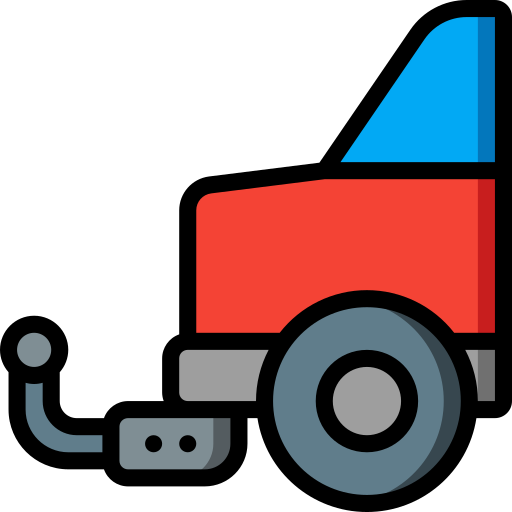GVWR Vs Towing Capacity: Understanding the Difference
Understanding the distinction between GVWR (Gross Vehicle Weight Rating) and Towing Capacity is crucial for anyone using vehicles for towing. These terms not only affect how much you can safely carry or tow but also play a critical role in vehicle maintenance, safety standards, and compliance with regulations.
In a Nutshell
- GVWR is the total weight a vehicle can safely handle, including its own weight and any passengers or cargo.
- Towing Capacity is the maximum amount of weight a vehicle can safely tow behind it.
- Never exceed either the GVWR or Towing Capacity to ensure vehicle safety and optimal performance.
- Differentiating between these terms is crucial for selecting the right vehicle for your towing needs.
Table of Contents
- Understanding GVWR
- Decoding Towing Capacity
- The Critical Differences
- Safety Implications
- How to Check Your Vehicle’s Ratings
- Conclusion
- FAQs
Understanding GVWR
Gross Vehicle Weight Rating (GVWR) is pivotal for vehicle safety. It is a manufacturer-specified standard indicating the maximum weight your vehicle can safely operate, including its own weight, fuel, passengers, and any stored cargo. Exceeding this limit may lead to potential hazards such as brake failure or suspension problems. For more details, you can refer to this GVWR Vs Towing Capacity guide.
Factors that contribute to GVWR:
– Vehicle’s curb weight
– Passenger weight
– Cargo weight
– Fuel and additional fluids
Decoding Towing Capacity
Towing Capacity defines the maximum weight your vehicle can safely pull. This rating ensures that the combined mass of the trailer, including any additional load, doesn’t exceed what the vehicle is built to manage. It’s essential to consider not only the weight of the trailer itself but also any cargo and items loaded onto it.
Key elements affecting Towing Capacity:
– Engine power
– Transmission system
– Suspension strength
– Rear-wheel configuration
Learn more about towing limits at Towing Capacity.
The Critical Differences
While both GVWR and Towing Capacity play critical roles, they serve different purposes. GVWR is concerned with the total load-bearing capability, influencing every day vehicle use, while Towing Capacity is specific to how much weight can be pulled behind the vehicle.
- Comparative distinctions:
- GVWR includes the vehicle’s own weight; Towing Capacity does not.
- Exceeding GVWR can lead to vehicle wear and tear, whereas exceeding Towing Capacity heavily impacts stability and handling.
Safety Implications
Compliance with GVWR and Towing Capacity ensures safety on the road. Overloading can lead to increased stopping distances, brake failures, and handling issues, jeopardizing not only your safety but that of others as well.
- Risks of ignoring weight limits:
- Reduced braking efficiency
- Increased tire wear
- Potential suspension issues
- Higher risk of accidents
For a deeper understanding of towing safety, visit this comprehensive Towing Guide from experts in vehicle capacities.
How to Check Your Vehicle’s Ratings
Determining your vehicle’s GVWR and Towing Capacity is essential before any towing. You can find this information in several places, such as the vehicle’s manual, door jamb sticker, or manufacturer’s plate.
- Steps to find your vehicle’s GVWR and Towing Capacity:
- Consult the owner’s manual.
- Look for the compliance certification label in the driver’s door jamb.
- Use online tools or databases entering your vehicle information for exact specs, such as this Automotive Guide.
Conclusion
Understanding the clear distinction between GVWR and Towing Capacity is pivotal. It guides you in making informed decisions about what and how much you can carry or tow with your vehicle, ensuring not only your vehicle’s longevity but also the safety of all road users.
FAQs
1. What happens if I exceed my towing capacity?
Exceeding your towing capacity can lead to severe vehicle damage, increased stopping distances, and in the worst cases, accidents.
2. Can GVWR and Towing Capacity overlap?
No, GVWR concerns the weight capacity of the vehicle itself, while Towing Capacity relates to the weight you can pull externally.
3. How do I calculate the weights if I’m unsure?
Use scales at truck stops to weigh your vehicle and trailer when loaded and consult your vehicle’s specifications.
4. How does GVWR affect everyday driving?
A vehicle that operates within its GVWR maintains better handling, braking, and general safety conditions.
5. Why don’t manufacturers make vehicles with a higher GVWR?
Increased GVWR would require sturdier, heavier materials, raising production costs and potentially decreasing vehicle efficiency.
6. Are all vehicles required to display these ratings?
Yes, manufacturers are required to display both GVWR and Towing Capacity for consumer awareness and safety compliance.
7. Do different states have different towing regulations?
Regulations can vary; it’s essential to check local laws, especially when crossing state lines, as states such as California have strict towing laws.
For additional insights, visit authoritative sites like the NHTSA for safety information or the AAA for practical towing tips.

Leave a Reply